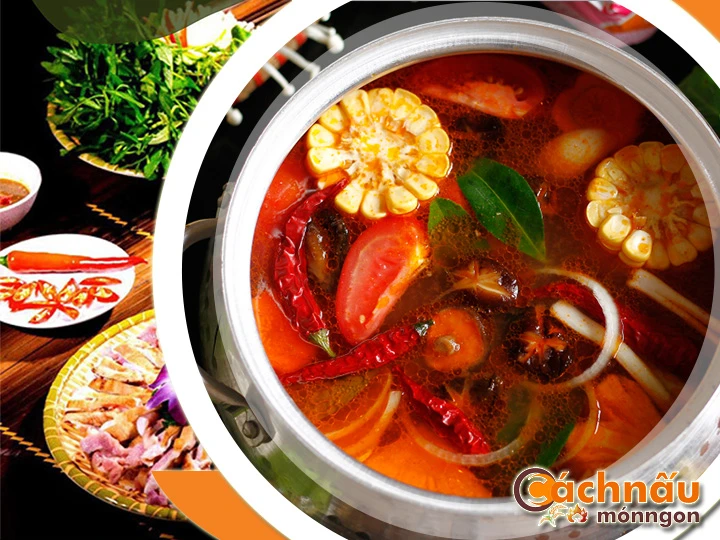Master the Ultimate Rabbit Hot Pot Recipe You Must Try - Lẩu thỏ
Master the Ultimate Rabbit Hot Pot Recipe You Must Try - Lẩu thỏ
Blog Article
Hot pot rabbit, a mouthwatering and traditional delicacy, has been valued across various cuisines and regions for centuries.

This comprehensive guide explores the sum of all parts you need to be aware of about rabbit hot pot, from its traditional beginnings to updated recipes, wellness benefits, and methodical instructions for creating the ultimate plate at home. Whether you are a experienced cook or a novice cook, this guide will empower and educate you to refine your talent of rabbit hot pot.
EXPLORING THE BACKGROUND ALONG WITH HERITAGE CENTERED AROUND {BRAISED RABBIT DISH|HEARTY RABBIT MEAL|RABBIT HOT POT|RABBIT STEW|BUNNY CASSEROLE|RABBIT CUISINE|STEWED RABBIT
Rabbit hot pot represents a one-of-a-kind and classic dish with profound traditions in different parts of the world. Its appeal stems not only from its hearty flavor but also from its legacy and traditions.
Rabbit hot pot serves as a distinctive and traditional dish with meaningful customs in different parts of the world. Its admiration stems not only from its flavorful flavor but also from its history and value.
- The History: Stewed rabbit was first made in villages where rabbit meat were a prevalent, protein-rich food source. In China’s past, it was a household staple, particularly during festivals.
- Spread Across Regions: In European nations like the UK, rabbit was traditionally used in savory recipes, becoming modern versions of global stews as the dish gained global appeal.
2. Hearty Rabbit Meal as part of East Asia's Customs.
- Throughout China: Known as the traditional rabbit hot pot, rabbit hot pot is an essential part of the culinary traditions of Sichuan, admired for its flavorful flavors and frequently prepared for reunion dinners.
- Korea and Japan: While less prevalent, rabbit hot pot is rarely created as a health-focused recipe in the Korean Peninsula, or drawing influence from Japan’s nabemono-style cooking in traditional Japanese cooking, highlighting local garden vegetables and herbs.
- Vietnam: Although rabbit hot pot is rarely a daily choice, it is famous during special times or in villages where rabbit meat is commonly found. It is often seasoned with distinctive spices such as citronella, fresh ginger, and hot chili, paired with fresh vegetables like morning glory, mustard leaves, or sensitive plant. This dish is cherished for its unique flavor and health benefits, frequently enjoyed during gatherings with friends or family.
Ở Việt Nam, tuy không giống như là món ăn phổ thông đều đặn mỗi ngày, nhưng được biết đến trong các sự kiện lớn hoặc ở các vùng quê, nơi có thịt thỏ dồi dào. Thường được tẩm ướp với các loại gia vị như sả, gừng tươi, và ớt tươi, kết hợp với rau sạch như rau nhút. Món ăn này rất được ưa chuộng nhờ vị ngon đặc biệt và dinh dưỡng dồi dào, thường được thưởng thức tại các bữa tiệc gia đình.
3. Stewed Rabbit throughout European Culinary Traditions.
- Throughout France: Traditionally served as a warming meal with wine-infused broth, fragrant herbs such as rosemary, and seasonal roots. Rabbit hot pot is a traditional recipe for family reunions.
- Within Italy: The dish named “Cacciatore”, featuring rabbit cooked with tomatoes and wine, is a early version of rabbit hot pot recipes.
RECIPES AND TECHNIQUES FOR COOKING RABBIT HOT POT
Rabbit hot pot is a flexible dish that combines fresh ingredients, savory broths, and distinct techniques to create a rich and satisfying meal. Below are essential tips into the key recipes and methods to master rabbit hot pot.
Essential Recipe for Rabbit Hot Pot
* Required Ingredients:
- 1 whole rabbit (chopped into parts)
- 4 cups of broth (bone broth)
- Vegetables (potatoes)
- Spices and herbs (garlic)
- Seasonings (soy sauce)
- Optional: noodles for serving
* Cooking Instructions:
- Prepare the Rabbit: Clean and chop the rabbit into pieces. Marinate with salt, pepper, and a splash of soy sauce for 30 minutes to enhance the flavor.
- Prepare the Broth: Heat a pan with a small amount of oil. Sauté minced garlic and sliced ginger until golden. Add your choice of broth and bring it to a boil.
- Add the Rabbit: Add the rabbit pieces into the pot and let them simmer on gentle heat for around half an hour until tender.
- Incorporate Vegetables: Add your preferred vegetables and cook until they are softened but still bright.
- Present: Transfer the hot pot to a large bowl. Serve with dipping sauces and side options like rice or noodles.
Key Techniques for Cooking Rabbit Hot Pot
- Marination:
. Marinate the rabbit with a mixture of salt, pepper, and seasonings to enhance its natural flavor.
. For more depth, use soy sauce or a mix of fresh herbs like rosemary and thyme.
- Adding Ingredients Strategically:
. Start by boiling the rabbit in the broth to release its rich flavor.
. Layer vegetables strategically based on their texture needs.
- Optimal Cooking Duration:
. Avoid letting it dry out the rabbit, as it can become tough.
. Test for completion by checking if the meat is lẩu thịt thỏ fork-tender.
- Taste Customization:
. Perfect the flavor by adding additional seasonings as needed.
. Experiment with different types of broths, such as herbal-infused variations.
Tips for Success
- Quality Matters: Always choose locally sourced rabbit and farm-fresh produce for the top flavor.
- Taste and Adjust: Be attentive of the spiciness in the broth. Taste and adjust frequently during cooking.
- Sauce Pairings: Offer a selection of sauces like sesame paste or soy-based dips to enrich the dining experience.
- Visual Appeal: Use a tabletop cooker or serve the hot pot as the centerpiece to encourage communal dining.
With mastery of these cooking techniques, you can prepare a rabbit hot pot that’s tasty and beautifully presented, turning it into a star attraction for any gathering or event.
Report this page
